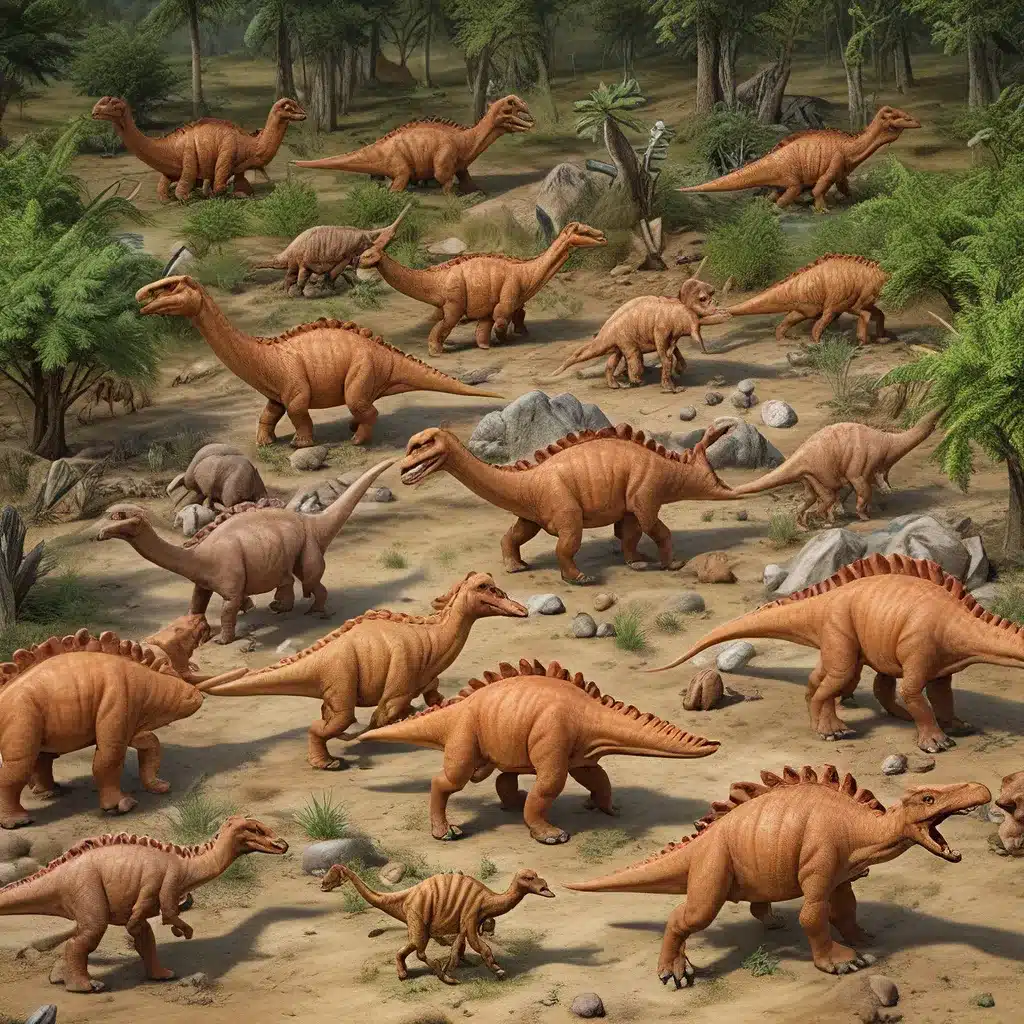
The study of dinosaurs and their prehistoric world has long captivated the human imagination. As paleontologists and archaeologists continue to uncover new fossils and artifacts, the picture of these ancient creatures’ lives becomes increasingly clear. One aspect of this ongoing exploration is the effort to understand the social structures and behaviors of dinosaur societies.
Piecing Together the Puzzle
Reconstructing the social dynamics of dinosaur communities is a complex and multifaceted endeavor. While the fossilized remains offer a wealth of information about the physical characteristics and evolutionary adaptations of these prehistoric beasts, deciphering their social interactions and organizational structures requires a more nuanced approach. Archaeologists and anthropologists employ a variety of techniques to gather and analyze the clues left behind by these long-extinct species.
One of the primary methods used to study dinosaur social structures is the analysis of fossil nesting sites and herd formations. By examining the spatial arrangements and orientations of dinosaur skeletons found in close proximity, researchers can gain insights into the social behaviors and hierarchies that may have existed within these ancient communities. Archaeologists use a variety of tools and techniques, such as microscopic analysis of soil and sediment samples, to reconstruct the activities and behaviors of prehistoric societies.
In addition to the physical evidence, paleontologists also study the biological and behavioral traits of different dinosaur species to infer their social structures. Factors such as sexual dimorphism, parental care, and cooperative hunting** can provide clues about the division of roles, hierarchies, and communication patterns within dinosaur communities.
Emerging Theories and Discoveries
As the field of dinosaur research continues to evolve, new theories and discoveries are challenging long-held assumptions about the social dynamics of these ancient creatures. For example, recent studies have suggested that some dinosaur species may have exhibited matriarchal social structures, with female individuals playing a dominant role in the group’s organization and decision-making.
Archaeologists and anthropologists have long studied the social structures of ancient civilizations, using a variety of methods to uncover insights about the roles and relationships within these communities. Similarly, paleontologists are now applying these analytical techniques to the study of dinosaur societies, shedding light on their complex social interactions and the potential for egalitarian or anarchic structures.
One intriguing discovery in this realm is the evidence of cooperative parenting and communal nesting among certain dinosaur species. This suggests a level of social cohesion and collective responsibility that challenges the traditional view of dinosaurs as solitary, territorial creatures. By understanding these nuanced social dynamics, researchers can gain a deeper appreciation for the sophisticated behavioral and cognitive abilities of these prehistoric giants.
Implications and Significance
The ongoing efforts to reconstruct the social structures of dinosaur societies hold profound implications for our understanding of these ancient creatures and their role in the broader context of evolutionary history. Beyond the scientific fascination, these insights can also inform our perspectives on the emergence and development of social complexity in the natural world.
By studying the social behaviors and organizational patterns of dinosaurs, researchers can draw parallels and lessons for the study of modern animal societies and even human civilizations. Emerging theories around egalitarian and anarchic social structures in ancient societies can provide valuable insights into the dynamics of power, decision-making, and resource allocation in complex communities.
Furthermore, the understanding of dinosaur social structures can shed light on the evolutionary trajectories that led to the emergence of modern species and the complex social systems we observe today. By piecing together this prehistoric puzzle, we can gain a more comprehensive understanding of the interconnected web of life that has shaped our planet and continues to captivate our curiosity.
As the field of dinosaur research evolves, the investigation of social structures promises to be a fruitful area of study, revealing new perspectives on the remarkable diversity and adaptability of these iconic creatures. Through the continued efforts of paleontologists, archaeologists, and interdisciplinary researchers, the story of dinosaur societies continues to unfold, offering a window into the captivating world of our prehistoric past.


